(Un)broken promises: what Mundfish promised to do in Atomic Heart and what we got in the end
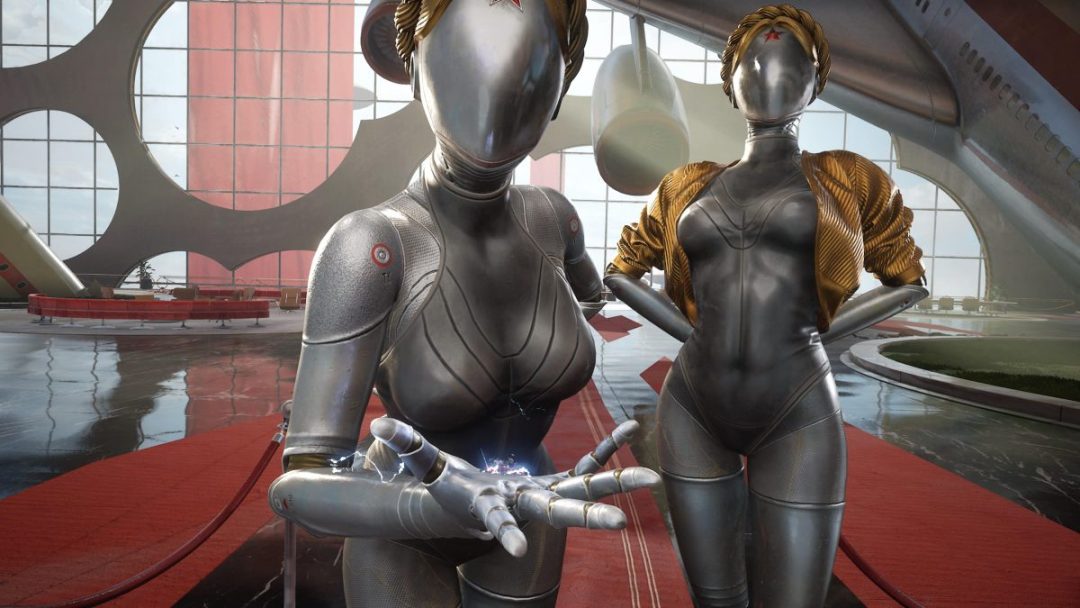
Atomic Heart is a very important project for all Coremission editors. No other game has been followed as closely as the game of Mundfish. And there was something to keep an eye on: Atomic Heart looked not only ambitious, but also very scandalous project. At various times, the players discussed the team’s lack of experience, dubious funding sources, and even about the project existence. The last question fell away at the end of this February: Atomic Heart was released on PC and consoles (and, by the way, started extremely successfully).
A relatively long time has passed since the release of Atomic Heart, and the usual review of the game does not seem like a very good decision. Everyone, who wants to play the game, has already managed to play it. However, I still want to compose the text based on the my results of game walkthrough. We decided to compare the final version of Atomic Heart with the Mundfish’s promises, and check how much the game had changed before the release. We try to remember everything was promised: from ray tracing and perfect performance to a long and exciting story campaign with smart enemies that make up a complete ecosystem.
The following article is based on trailers and other promotional materials of Atomic Heart, as well as interviews with representatives of Mundfish. We do not aim to catch the developers in a lie, but rather, we try to understand how the original vision of the team differs from the release version of the Atomic Heart (and whether it differs in principle).
Plot and setting
What was promised:
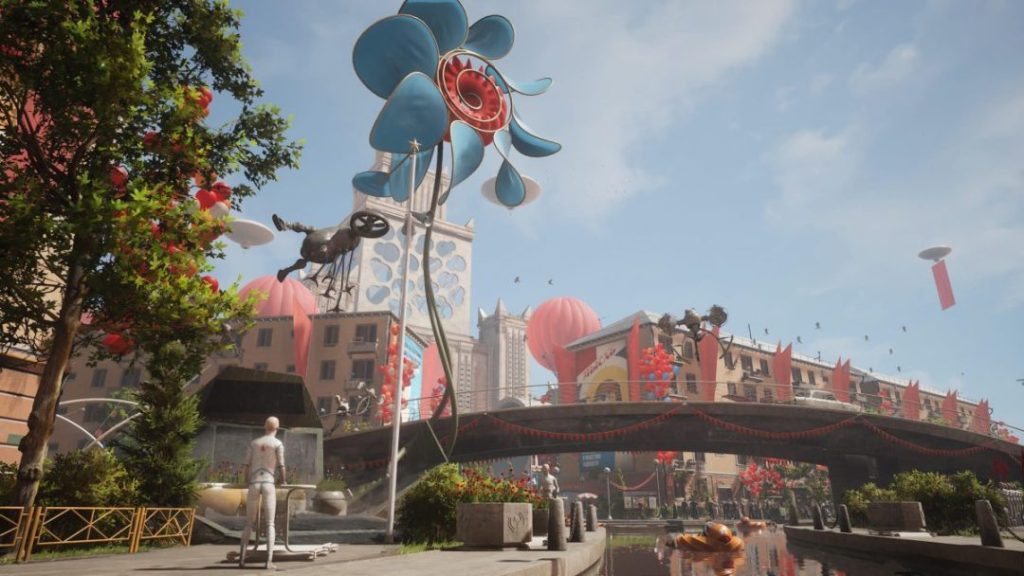
Mundfish preferred to speak about the plot in general terms, without revealing special details. The synopsis: an accident occurred at government (and, of course, secret) facility, as a result of which robots went mad and destroyed employees and the entire population in the district. The player, as main character with a strange code name P-3, was sent to clean up the mess.
The developers claimed that people associated with the film industry took part in the work on the script, which should have had a beneficial effect on the plot. The campaign itself was supposed to last about 20-25 hours. As a setting the team chose the USSR of the 50s with appropriate music, cultural features and visuals, but without trash elements.
What was actually released:
From the very announcement, the setting of Atomic Heart spoke for itself – just look at the screenshots and trailers. An expressive mix of Soviet aesthetics and hi-tech attracted the eye and intrigued even people far from video games.
The epithet “unique” best suits the setting of Atomic Heart. Mundfish artists can be proud of themselves: visual aesthetics is perhaps the main advantage of Atomic Heart. The design of all elements of the local world – from enemies and crafting robots to wall posters and interfaces – looks like it was really created in some futuristic version of the USSR. The game impresses with elaboration of aesthetics, and people who managed to live in the USSR for some time will surely experience a nostalgic feelings from the setting.
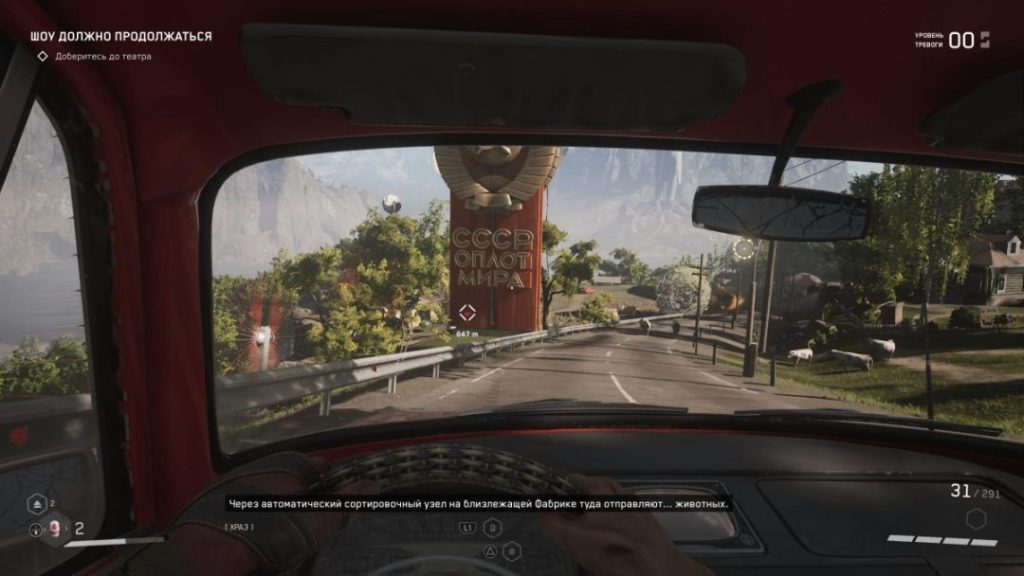
However, the project came out at a pretty sensitive time. Immediately after the release, Atomic Heart was accused of glorifying the Soviet Union and almost propagating authoritarian values. I spent almost twenty hours in the game and it’s hard for me to find at least some confirmation of this take: the plot of Atomic Heart, in fact, criticizes the Soviet Union (however, like a capitalism). Moreover, the imperfection of communism is one of the leitmotifs of the game’s plot. If Atomic Heart glorifies the USSR, then, following this logic, the Wolfenstein dilogy glorifies… Nazi Germany? After all, architectural monuments and other cultural attributes in the shooters from Machine Games are also shown with a certain amount of pathos, but we don’t see any perturbation. A closer look reveals that such reason does not have any rational basis.
But the story itself has something to criticize – or rather, the narrative methods of the developers. The plot is quite good by the standards of shooter genre, but it is pretty mediocre. There are few cutscenes in the game (most of them are concentrated in the last third of the game), and the story and lore are served mainly through boring notes and conversations with the protagonist’s assistant glove. Notes, in addition to valuable information, contain a bunch of uninteresting trashy info, and till the end of the game notes are so bored that you literally should force yourself to read it. As if this is not enough, for some reason some of information from notes is also duplicated in the dialogues – apparently, so that you remember important details exactly.
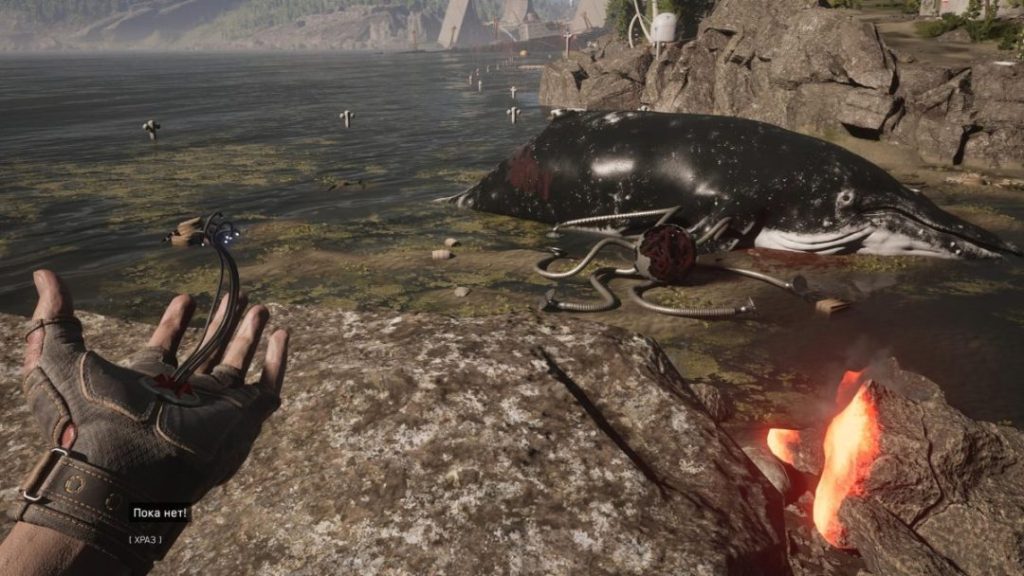
Talking with a glove is also depressing activity. Firstly, the conversations are incredibly long, and if you want to listen it completely, you should stand at one place for a long time – otherwise the dialogue will be interrupted by another trigger. Mundfish obviously needed to keep a closer look on the God of War franchise: Sony Santa Monica has long come up with a neat way to solve the problem.
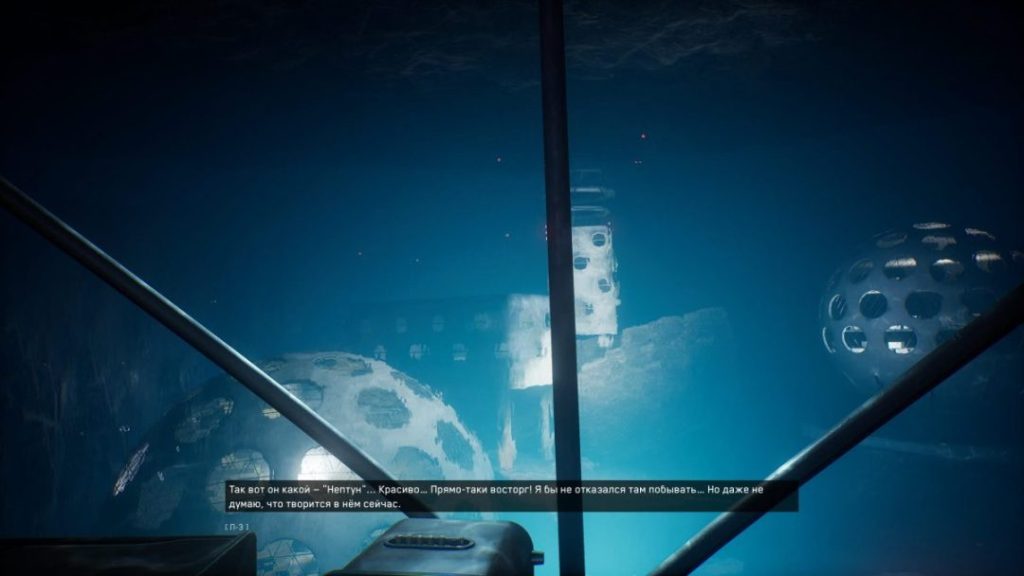
But the campaign itself turned out to be quite long: to completely close the story, you will need fifteen to twenty hours. And those who like to explore locations can easily get more than thirty hours in Atomic Heart.
What is the result:
Despite the small number of characters, Atomic Heart has a pretty interesting story, which is spoiled by an unsuccessfully way of presenting. However, this is partly redeemed by a bewitching setting in which you want to stay longer.
Gameplay and combat system
What was promised:
Atomic Heart was presented as an action-adventure scoped on close combat, with a relative lack of ammunition, but a wide variety of opponents, which would have to be individually approached.
What was actually released:
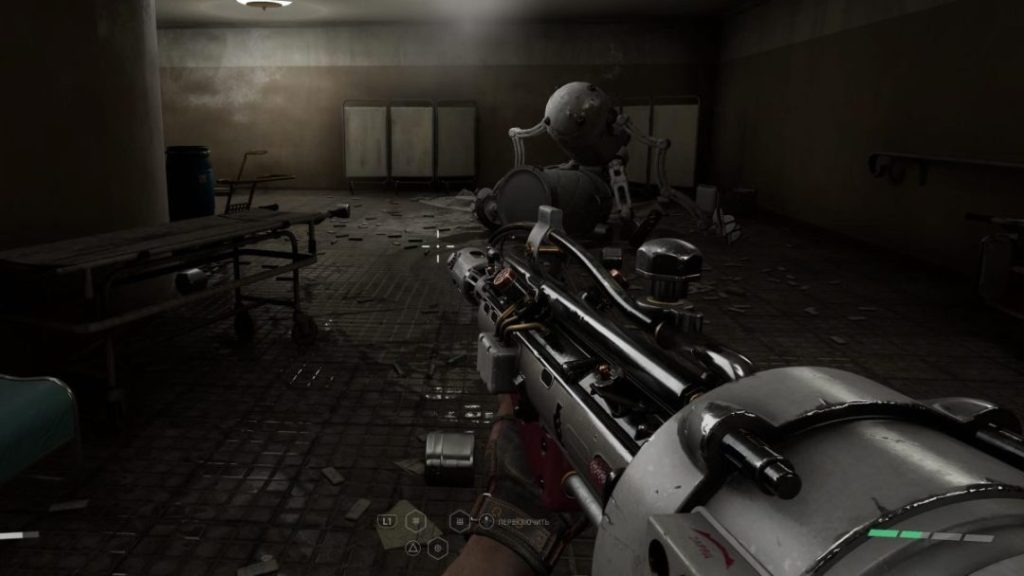
Combat in Atomic Heart combines melee weapons and firearms, both of which need to be combined with polymer abilities, BioShock’s plasmids local equivalent). At the first hours, you really have to use mainly axes and sledgehammers: ammunition is rare, as well as resources for a crafting machine. Hand-to-hand fighting is interesting, even despite the meager arsenal of techniques. Androids react quickly to blows, and have a habit of attacking sharply, causing extreme damage. Considering that you have to use first-aid kits to heal in this game (and this process is not very fast), the battles turned out to be quite adrenaline.
Fighting the enemies with guns is not only faster, but also more enjoyable, especially since the PS5 version actively uses adaptive triggers. Each pull of the trigger is done with a little effort, and the vibration realistically conveys the realistic behaviour of the weapon. There are not so many guns in the game, but each of them is felt in its own way, and you want to use everything at once.
After the third of the game, there will be no point in engaging in close combat. It seems that Mundfish took the critics who scolded Atomic Heart for being too hardcore seriously, and as a result the developers simply broke the medium difficulty. After just a few hours of playing, you feel yourself absolutely safe: there are plenty of resources to upgrade abilities and arsenal, and you still have enough to craft ammo and first-aid kits. As a result, the difficulty drops downward: the first hours will be the pretty hard, but then no one will be able to throw you off the top of the food chain. Even the bosses: first fights with them feel quite tense, but towards the end I didn’t even have enough time to see the entire move-set of the enemy, killing him in first minute. It’s a pity: the bosses come across pleasant musical themes and good-looking fight arenas, where you will want to stay longer.
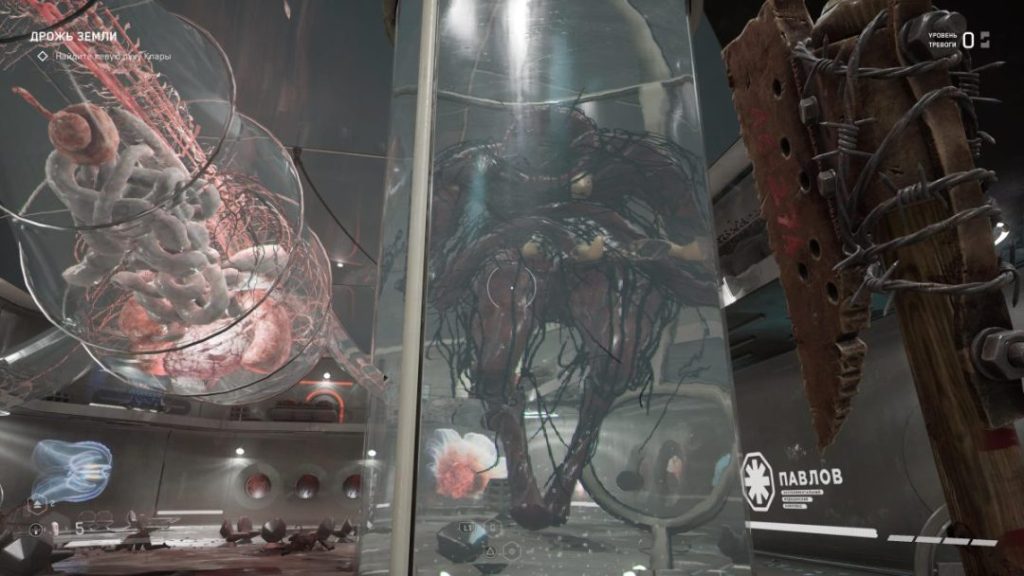
Special skills, unfortunately, also did not impress. Only three of from the entire list are really useful. They should be pumped in the first place, and you can forget about the rest abilities (but some of them also look very impressive). Considering that most of your opponentsin are robots with characteristic vulnerabilities, you will quickly find the most effective behavior pattern and you are unlikely to want to use something else.
What is the result:
The combat system is interesting in its basis, but is prevented from revealing by a failing balance and poor-conceived abilities. However, it is still interesting to shoot the enemies, and this does not interfere with enjoying the game.
The world and ecosystem
What was promised:
Although the robots in the world of Atomic Heart got out of control, they did not fall into absolute anarchy: different types of machines had to interact with each other, and the local AI had to monitor the number of mechanical population in the region. The game world, should be open for exploration and contain many different activities.
What was actually released:
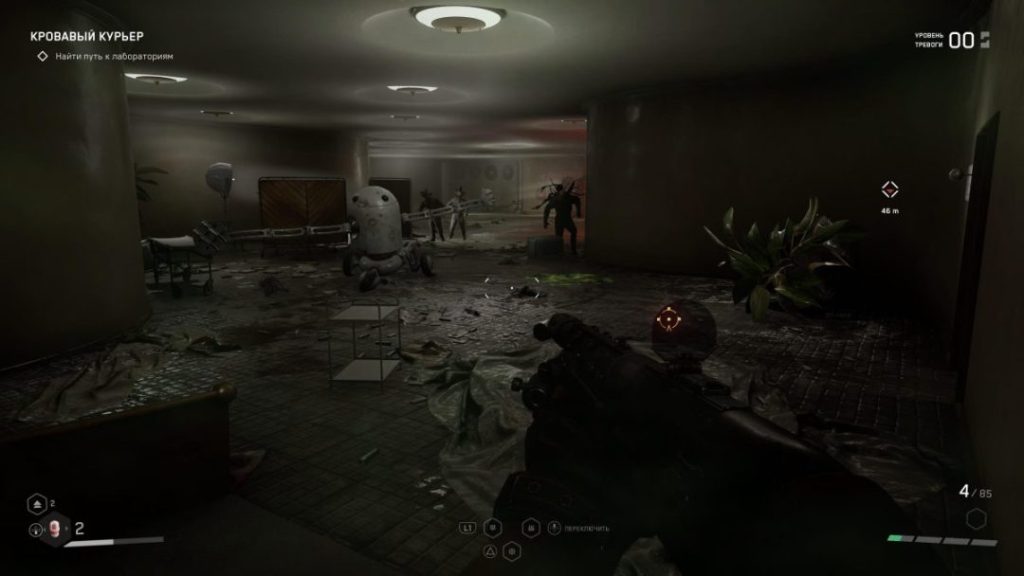
Robots in Atomic Heart do exist in some kind of ecosystem, but it reveals itself mostly in open locations. The world of the game is densely populated (to be honest, even too much) with a variety of machines, and when they meet you, will certainly begin to attack. If you join the battle and win it, then the local alarm system will send special robo-repairers to fix the fallen. And if you eliminate them too, it will send stronger reinforcements. By this, in fact, the work of the local ecosystem ends.
Unfortunately, it plays about the same as it sounds. Skirmishes with robots in open locations are not only the same type and formulaic, but also made solely in order to deplete your supply of resources. It is almost impossible not to engage in battle: even if you pass the next patrol of bobbleheads, one of the cameras will definitely notice you and raise the alarm.
The only positive thing here is that it is easy enough to run away from the hulking robots. You can do this both on your own two feet and on cars, which are more common than you might imagine. Driving, alas, is done solely for show: cars have brick physics and literally light up from two collisions with a curb. And it’s much easier to miss a point of interest while driving – another reason not to use the crippled transport.
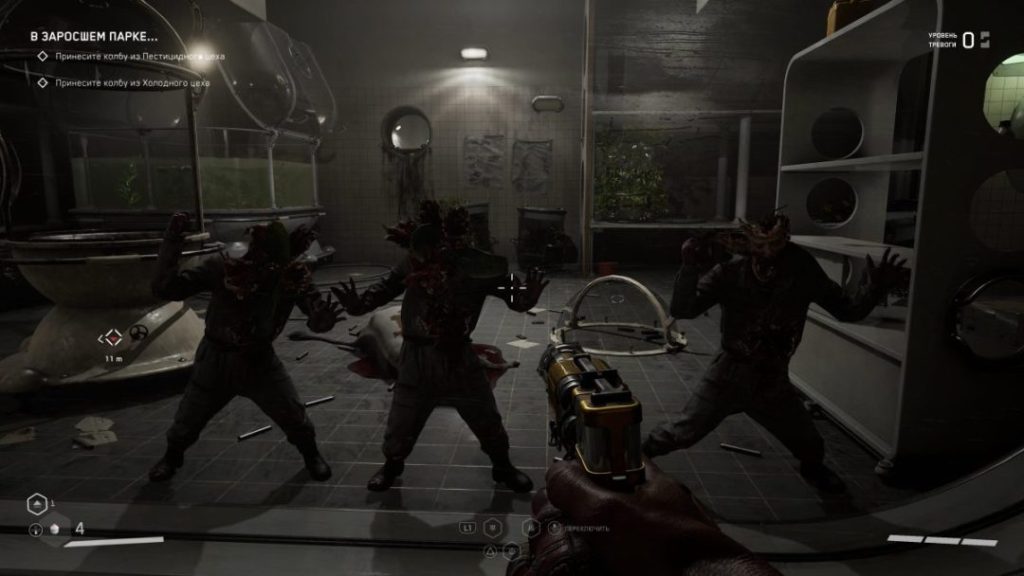
Points of interest in the game are divided into two types: abandoned settlements, in which there is nothing but robots and ordinary loot; and Polygons – special instances, for the passage of which you can get upgrades for weapons and better loot.
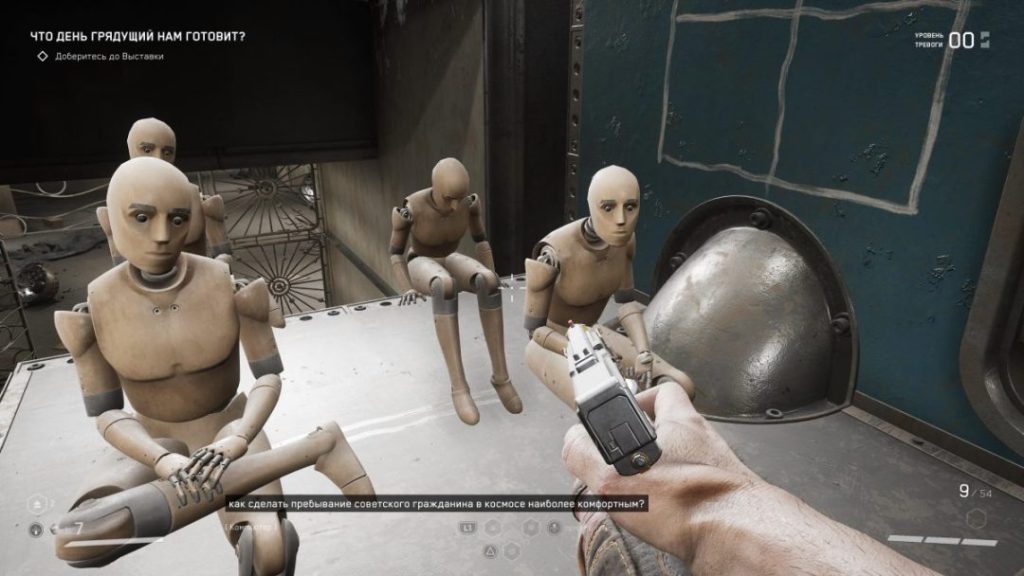
I would like to talk about the Polygons separately, cause they turned out to be really curious. There are twelve Polygons in the game world, and everyone of them is a really difficult and interesting challenge. Somewhere you need to fight the boss; somewhere you need to solve a sequence of non-trivial puzzles. Even the way inside the Polygon is a puzzle, albeit a small one. Interesting lore is rare in that locations too, but we don’t recommend skip the Polygons: even if you don’t like puzzles (they are more difficult than in the main story), passing these instances is the only way to get some modifications for weapons (like the collimator sights). For example, I fought with one of the local bosses first exactly in the Polygon (and I was clearly not ready for this battle). The victory wasn’t easy, but I experienced a complex range of feelings in relation to my own skills. All in all, I recommend you try to get through Polygons – you won’t be disappointed.
What is the result:
Formally, the ecosystem in the game exists and works, but it doesn’t generate interesting game situations. But the Polygons are definitely a success – it is almost always interesting to go through them.
Craft system
What was promised:
The craft system in the game was supposed to not only improve the characteristics of weapons, but also change its visually. Upgrades should be approached wisely: installing everything at single weapon will not work.
What was actually released::
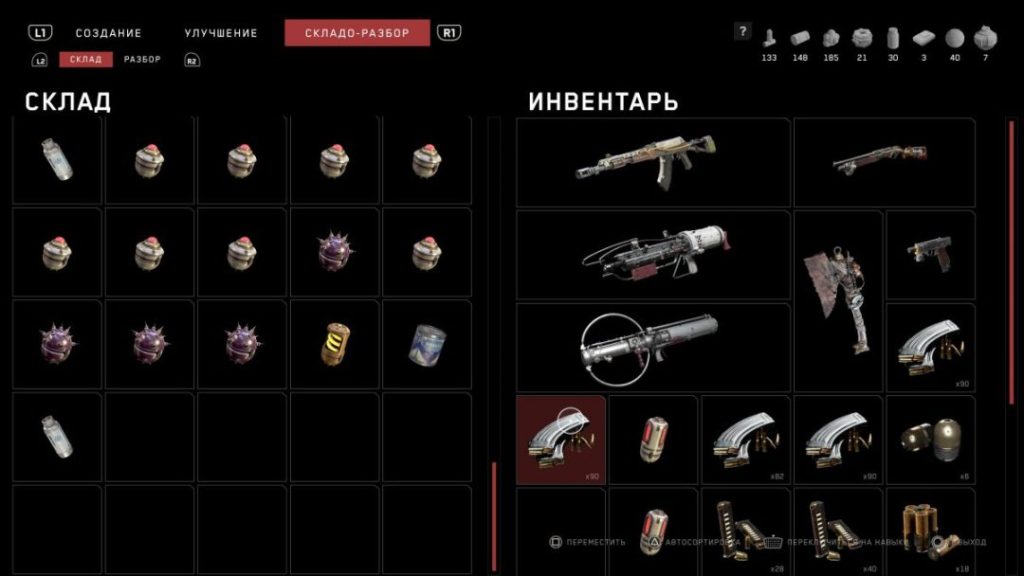
The craft is the same case as situation with combat: an interesting system suffers from a bunch of minor flaws and strange decisions. Let’s start with the fact that there are a lot of different types of resources in Atomic Heart. With the different components you can pump different game mechanics, from weapons to abilities. At first glance, the loot grabbing is designed very conveniently: with you glove you can vacuumate drawers and racks with the press of just one button. This may sound like a great time saver, but unfortunately it’s not. Locations in the game are bursting with all sorts of resources, and collecting them, even despite this convenient solution, will take you almost more time than fighting opponents. Perhaps the list of loot types should have been reduced to three or four, dividing them more by rarity level.
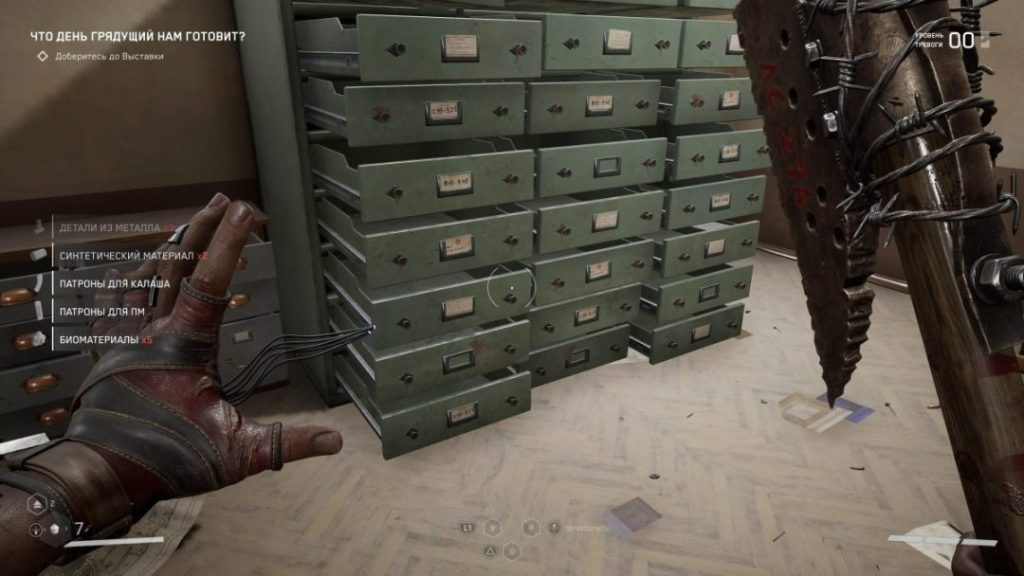
You need to upgrade your skills and weapons, as well as craft consumables like first-aid kits and cartridges in special machines with an absolutely monstrous interface. Switching between sections is very slow, the names of resources are not highlighted: you are offered to remove things from the inventory, the purpose of which you do not even know. It is completely incomprehensible who could have decided that this is a good solution.
But upgrades – even if they are few – really change the gun appearance and seriously help in battles. For example, all weapons in the game can be equipped with a cassette block, which allows you to do fire or ice damage. At the first time, when your skills have not yet been upgraded, it helps a lot, but later you resort to this opportunity less and less.
What is the result:
The game have more crafting than shooting, and it is made in a peculiar way. The number of resource types should be reduced, and instead, the number of unique upgrades for guns should be increased.
Graphics and performance
What was promised:
The developers especially noted the technical part: in addition to a good looking picture they promised high performance on consoles, ray tracing support, as well as stability of work.
What was actually released:
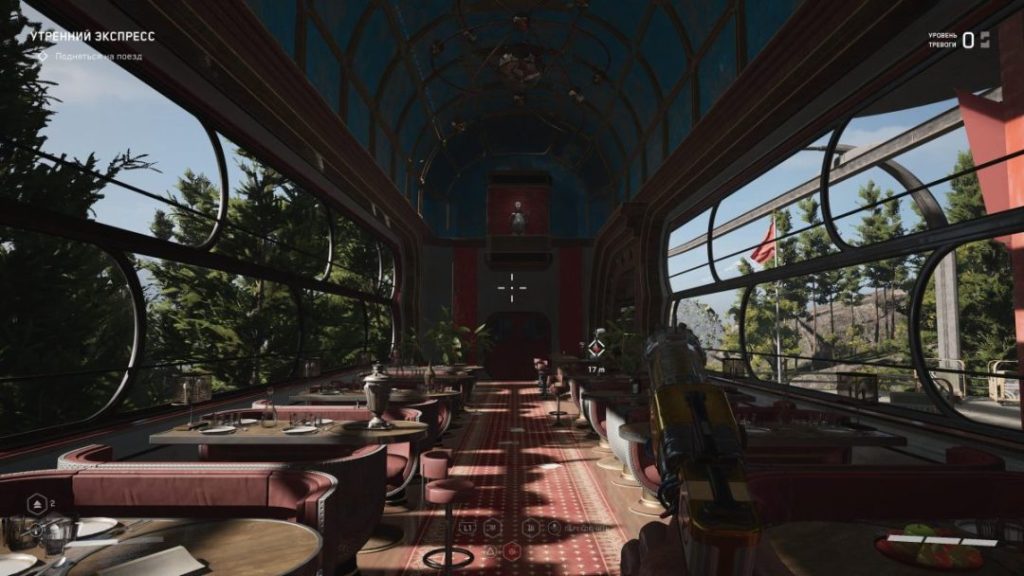
I’ll note right away that at the time of release (as well at the time of writing this text, however), there was no ray tracing in any version of Atomic Heart. Considering that NVIDIA’s RTX support was mentioned in an advertising trailer in 2018, decision not to implement the technology into the release version obviously is made for the sake of optimization. However, ray tracing, like the photo mode, is promised to be added with one of the upcoming patches.
But the game performance is ok on all platforms: the new consoles are quite cheerfully pulling Atomic Heart. But the game on PS5 (I played this version) and on Xbox Series have only one performance mode: 60 FPS with dynamic resolution. There are no frame drops (even in epic battles with a large number of enemies), except that in open spaces the clarity of the picture noticeably (but not fatally) decreases. I did not notice any critical bugs at all, only a few visual glitches.
Technologically the graphics in Atomic Heart are not as impressive as in the first videos (after all, six years have passed since the announcement), but in general it looks at the same level as other modern releases. And the visual style and design code of the shooter itself have much more weight than the inevitably outdated technical platform. It would be much more difficult for a project with a more common style to compensate the lack of graphics technologies.
What is the result:
Atomic Heart turned out to be without ray tracing at the release, but with good optimization without a bunch of bugs. Sounds like a fair deal.
Soundtrack
What was promised:
A significant part of the game’s commercial trailers was dedicated to sound development: Mundfish promised many licensed soviet hits. Also studio attracted Mick Gordon (DOOM, DOOM Eternal) to work on the soundtrack.
What was actually released:

The soundtrack is the second (after the visual design) bright diamond in Atomic Heart’s crown. At first, it was hard to imagine how “A Million Scarlet Roses” would be combined with Gordon’s aggressive tracks, but the game setting successfully composing the soundtrack into a single audio canvas. In Atomic Heart you are always surrounded by music: it flows from the radio; plays from cars and crafting machines and, of course, sounds in battles. Combat music is far what you’re have heard in the DOOM – both the original tracks of Gordon and remixes of russian classics set the battle flow. My personal favorite is “Grass near the House”: the reinterpretation of the famous song sounds fantastic and I like it much more than the original track. But I asked for me, the much-praised remix of “Komarovo” is not so pleasant.
I didn’t like the voice acting at first, but after beating the game, I rather consider that it just ok. Actors play without enthusiasm, but frank boredom is not heard in their voices. Dialogues periodically sound accelerated, and sometimes they seem to fall out of the overall sound picture, but after a while you stop paying attention to it. The voice acting, especially the replicas of the protagonist, is richly flavored with obscenities, so the puritans should immediately switch to the English version.
What is a result:
The game has an excellent soundtrack and rather average voice acting (but at least it is just ok). Aesthetes should play in English.
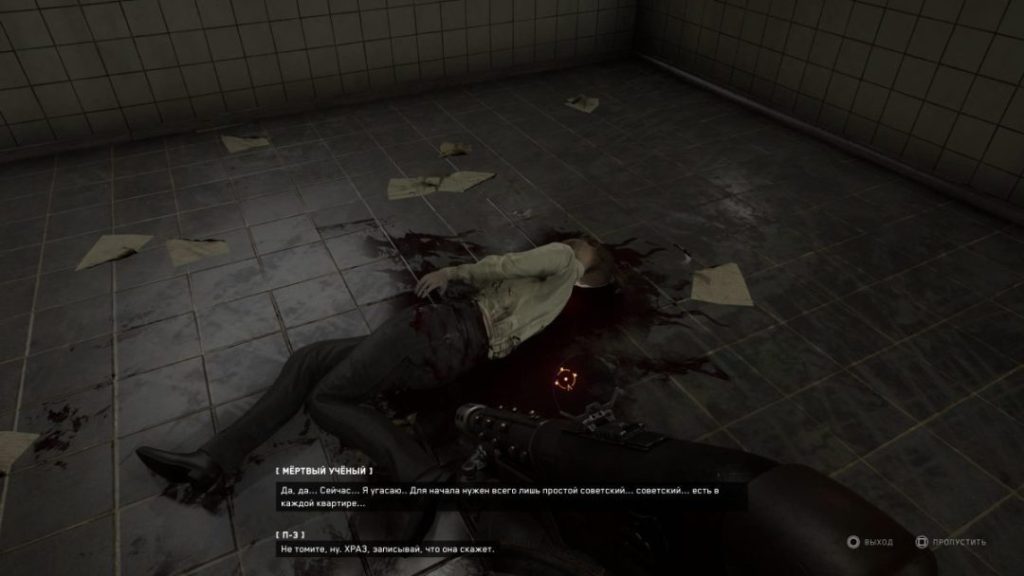
***
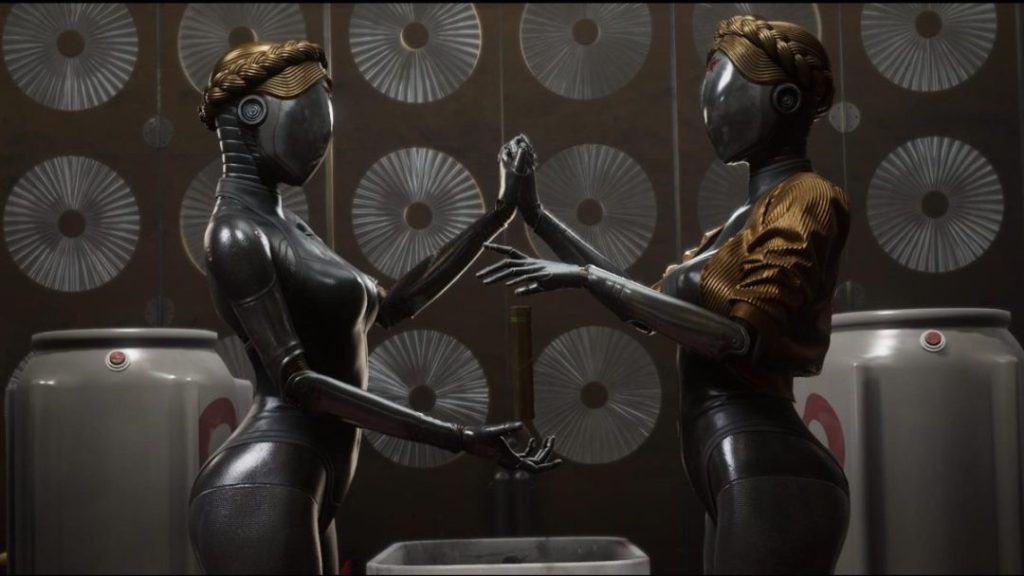
Atomic Heart is a very special example of the game that did not collapse under the weight of its own ambitions and released without much loss. Something in Atomic Heart turned out well and some elements of the game didn’t work as intended. But nevertheless, Atomic Heart is perceived as a solid project with an unusual setting, which is really fun to play most of the time. The developers did not try just to portray the development of a dream game, but really systematically implemented a complex and interesting concept. However, taking into attention the fact that this is the first project for the team (Soviet Lunapark can be omitted with a clear conscience), the peak looks quite conquered.
It is gratifying that the somewhat prejudiced attitude towards the project did not affect its success: apparently, Atomic Heart sold well, and Mundfish herself is already thinking about a sequel. And the lifecycle of the original is not yet over: in addition to the ray-traced patch, we are waiting for four content additions. Despite the fact that nothing is known about it, future DLCs are of interest: Atomic Heart has a lot of potential, and there are cool stories left in the game world to tell.
Atomic Heart is a game you should not to miss for many reasons. This is a project in the very unusual setting, with interesting gameplay ideas; it has an excellent soundtrack and a working (albeit with reservations) combat system. At the same time Atomic Heart is just a good shooter without a service model, co-op, and other “innovative” features. If you don’t have a persistent allergy to Soviet setting and you like shooters, then you simply don’t have worthy reasons to skip Atomic Heart.
I would like to wish Mundfish not to lose the fuse and continue to support the universe, no matter what. There will always be people who are unable and unwilling to look behind the motley screen, and if you pay attention to their voice, then ideas will remain just ideas. And if the team should inherit something from the Soviet Union, it’s the ability to fit into the “five-year plans” – we don’t want to wait another six years for a sequel.
Detailed information about the game
